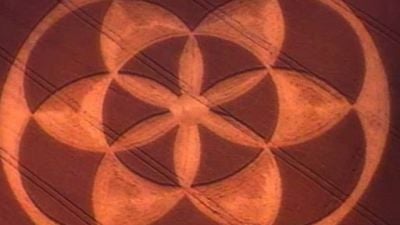
Ep 9. Asteroid Collision: Doomsday Destruction or Passing Apprehension?
- TV-NR
- February 24, 2010
- 25 min
In the riveting Season 2, Episode 9 of World's Greatest Mysteries, titled Asteroid Collision: Doomsday Destruction or Passing Apprehension?, viewers are invited on a captivating journey into the cosmos, where the precarious balance between humanity’s existence and the potential for calamity hangs in the balance. This episode explores one of the most pressing questions of our time: how vulnerable are we to a cosmic disaster in the form of an asteroid collision, and what does it mean for our future?
The episode begins by diving into the historical context of asteroid impacts on Earth, illustrating how our planet has been shaped not just by geological forces but also by celestial events. Through engaging storytelling and expert insights, the episode presents detailed accounts of famous asteroid impacts, such as the one that led to the extinction of the dinosaurs. By examining these monumental occurrences, the episode underscores the profound effects that asteroids have had on the course of life on Earth, establishing a foundation for understanding the current risks we face.
Central to the discussion is the dichotomy between fear and reassurance. On one hand, scientists and astronomers articulate the potential for catastrophic events; large asteroids traveling at extraordinary speeds pose a significant threat to life as we know it. The episode artfully weaves in interviews with leading experts who explain the science behind asteroid detection and tracking. These specialists offer insights into ongoing research and government initiatives aimed at monitoring near-Earth objects (NEOs) and mitigating potential threats. Viewers learn about various detection systems and the technology employed to calculate the trajectories of these cosmic bodies, making the vast cosmos feel both accessible and alarming.
Throughout the episode, the narrative shifts between the pessimistic outlook of impending doom and a more measured, rational perspective that emphasizes preparedness and scientific advancement. The show invites viewers to consider the recent advancements in planetary defense strategies—techniques that include deflection missions and impact modeling. By highlighting initiatives like NASA's DART (Double Asteroid Redirection Test) and other international collaborations focused on minimizing risk, the episode brings a sense of hope amid the apprehension surrounding potential impacts.
In addition to scientific discourse, the episode delves into the psychological aspects of our relationship with asteroids. It questions why society is so captivated by the idea of apocalyptic scenarios involving celestial collisions. With mounting evidence and alarming statistics, the fear of the unknown can drive a sense of urgency for action, but is that fear justified? The show features discussions with psychologists and sociologists who explore the human psyche's innate fascination with doomsday scenarios, reflecting on how media portrayals amplify these apprehensions.
As the episode progresses, viewers are treated to dramatic visuals showcasing the outer reaches of our solar system, emphasizing the beauty and peril embedded in our celestial neighborhood. The cinematography evokes a sense of wonder, showcasing asteroids and comets while blending tantalizing imagery with fact-based commentary. This heightened sense of awe serves to balance the weight of the subject matter, encouraging viewers to appreciate both the cosmic dance of celestial bodies and the fragility of Earth’s existence.
Moreover, the episode contemplates philosophical questions surrounding fate and free will. If we are aware of potential asteroid threats, what responsibility do we have as a global community? Should we invest more in space programs and planetary defense, or are we merely at the mercy of the universe's whims? These inquiries resonate throughout the episode, elevating it beyond a simple recitation of facts into a deeper exploration of human agency in the face of existential threats.
Supporting narratives also emerge, presenting stories of communities and individuals who have become passionate advocates for asteroid awareness and education. These grassroots movements demonstrate a proactive approach to a concept traditionally shrouded in fear. By arming the public with knowledge and fostering discussions about preparedness, these advocates are working to shift the narrative from one of despair to one of resilience and empowerment.
As the episode concludes, viewers are left with a nuanced understanding of the complexities surrounding asteroid collisions: the delicate balance between doomsday destruction and passing apprehension. By thoughtfully dissecting the scientific, psychological, and philosophical layers of this phenomenon, World's Greatest Mysteries urges audiences to engage with both the beauty and the dangers that exist within the universe, ultimately inspiring a sense of curiosity and responsibility that transcends fear. With its compelling blend of expert interviews, historical context, and awe-inspiring visuals, this episode promises to keep viewers on the edge of their seats while provoking thoughtful reflection long after the credits roll.